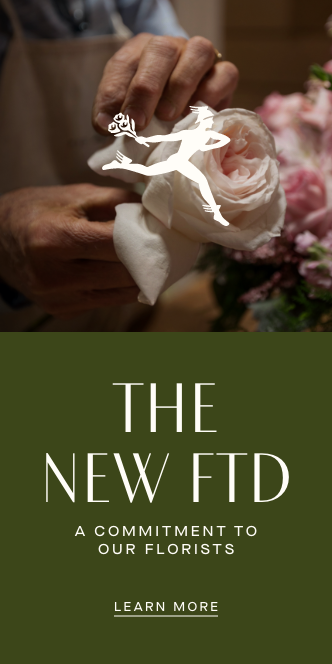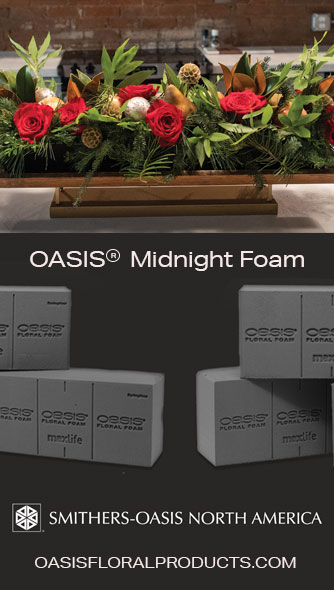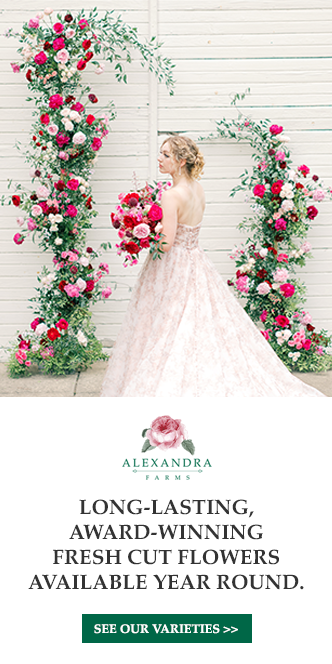The abundance of flowers—and business opportunities—in multi-day Indian nuptials.
By Nita Robertson, AIFD
Indian weddings are among the most visually spectacular and culturally rich celebrations in the world. Known for their grandeur, vibrant colors and elaborate decor, flowers play a pivotal role in the celebration. Deeply woven into Indian traditions, different flowers carry unique symbolic meanings—representing purity, prosperity, beauty and spirituality. With more than 30 diverse South Asian cultures, each celebration reflects unique traditions and spirit, influenced by the couple’s family heritage. The specific rituals and traditions can vary across different communities, regions and families. Understanding the customs and traditions surrounding flowers in Indian weddings can unlock incredible opportunities to create stunning, culturally resonant floral designs. Let’s dive into the world of Indian wedding flower traditions and explore how you can cater to these timeless ceremonies.
A FLORIST’S DREAM
Unlike Western weddings, which typically last one day, Indian weddings often span several days. Each day features elaborate ceremonies, receptions and cultural traditions—many of which require fresh flowers. From the sacred wedding canopy to intricate garlands and floral jewelry, flowers play a vital role in every aspect of the celebration. These multi-day events provide a wealth of opportunities for florists who wish to expand their services to include this growing market.

COMMON PRE-WEDDING RITUALS
Here are the customary events that take place in the days leading up to Indian wedding ceremonies—as well as some floral design suggestions.
Sangeet
Traditionally celebrated in the Punjab regions of India, this ceremony has been adopted by many other regions as a celebration before the wedding. Traditionally, it was a female-only gathering, but modern times allow for men to join in on the fun too. Unlike religious ceremonies, such as portions of the wedding, the “sangeet” is solely conducted to relish in the joy of the couple, and to bond the families and friends of the bride and groom before the big day. Florists have a great opportunity to decorate for this festive occasion by offering centerpieces and flower installations.
Mehndi
The “mehndi” ceremony is one of the most vibrant and cherished pre-wedding traditions in Indian weddings. This event, typically held a day or two before the wedding, is traditionally a time for the bride, her family and friends to gather in celebration as the bride’s hands and feet are decorated with intricate henna designs. Mehndi symbolizes beauty, love and the couple’s future prosperity.

Floral design ideas include:
Backdrops and Photo Walls:A stunning flower backdrop serves as the perfect setting for photos and enhances the overall ambiance. Florists can design walls of marigolds, roses, jasmine or orchids to create an enchanting backdrop for the henna application area.
Hanging Garlands and Canopies:Hanging strands of marigolds, roses or tuberoses from the ceiling or archways bring a festive and traditional touch. Canopies made of fresh blooms and greenery can create a magical, fragrant space for guests to gather in.
Flower-Adorned Seating for the Bride:The bride typically sits for hours while her mehndi is applied, making it essential to have a beautifully decorated seating area. A flower swing or an intricately designed chair adorned with roses, peonies or bougainvillea can make for a lovely focal point.
Table Centerpieces and Rangoli:Low flower arrangements with vibrant blooms, such as marigolds, Gerberas and carnations can enhance the dining or lounge areas. Additionally, you can create flower rangoli patterns on the floor using petals, adding to the traditional aesthetic. Rangoli—a colorful Indian art form said to bring good luck—welcomes guests and deities and symbolizes joy and prosperity.
Fresh Flower Jewelry
A growing trend in mehndi celebrations is flower jewelry, where the bride wears earrings, bangles and hairpieces made from fresh blooms like jasmine, roses and orchids. Guests may also wear flower wristlets or headpieces to match the festive theme.
Haldi
The pithi ceremony, also known as the “haldi” ceremony, involves applying turmeric paste and rose water to the betrothed couple. Haldi is a Hindi word for turmeric. This spice, considered to be incredibly healing, is used for a pre-wedding cleansing and purification ritual. The turmeric is made into a paste and rubbed onto different areas of the body. The yellow paste is believed to ward off evil, help the couple’s skin glow before the big day and bless them with good luck. This ceremony is a fun event that involves both sides of the family, and everyone wears orange and yellow. Floral design ideas include:
Marigold-Draped Entrance and Pathways: Marigolds, which symbolize prosperity and happiness in South Asian weddings, are a staple in haldi ceremony decor. Florists can create grand entrances adorned with cascading marigold garlands, forming a flower curtain that guests walk through. Pathways can be lined with fresh marigold petals or potted plants to create an immersive floral experience.

Hanging Installations
Since haldi ceremonies are often held outdoors in courtyards or gardens, you can design stunning hanging flower arrangements. For example, strings of yellow and orange marigolds, interspersed with jasmine or roses, can be suspended from trees, pergolas or ceilings to create a vibrant, festive canopy.

Backdrops for Rituals and Photos
A haldi celebration isn’t complete without a beautiful flower backdrop where the couple sits during the ceremony.
Seating for the Bride and Groom
The couple usually sits on a low bench or swing during the haldi ceremony while family members apply turmeric paste. For example, you can design a flower swing draped in yellow and orange blooms, accented with flowing fabrics or fresh greenery—or, alternatively, a flower-adorned couch.
Centerpieces
For a cozy dining or lounge setup, you can create low centerpieces with yellow and orange roses, carnations and chrysanthemums. Or how about lush flower garland runners draping across tables?
Flower Jewelry for the Bride and Guests
Just like the mehndi ceremony, flower jewelry is a beautiful trend for the haldi event. Consider offering hair accessories, such as flower crowns or jasmine garlands to be intertwined in braids.
WEDDING RITUALS
Here are the specific parts of the ceremony that require a florist’s touch, as well as some other aspects of the wedding for which you could offer floral design.
Baraat
The word “baraat” means marriage procession. During this event, the groom makes a grand entrance into the wedding ceremony, often on horseback. In modern times, the baraat may include a fancy vintage or sports car, or motorcycle, instead of a horse. Florists can decorate the “vehicle” the groom chooses to make his ceremonial entrance into the wedding.
Flower Garlands (Jaimala or Varmala)
One of the most iconic elements of an Indian wedding is the exchange of garlands between the bride and groom. It symbolizes acceptance as well as shared love and responsibility. This moment has similar significance to the exchange of rings in a western wedding ceremony—it’s a union of two people and two families. Garlands are often made with marigolds, roses or jasmine, and embellished with golden threads or pearls for added elegance.


Wedding Mandap
The “mandap” is a four-post canopy altar that is a sacred space in which the bride and groom exchange their vows. The focal point of the wedding ceremony, it’s decorated with flowers to create a divine and festive ambiance. Traditional mandaps feature marigolds, roses and lotuses, while modern designs incorporate orchids, hydrangeas and lilies for a contemporary touch.

Floral Design: Te Quiero Feliz – Photograph by Chuchopotts
Entrance and Venue Adornments
From elaborate flower arches to cascading flower curtains, entrances and venues are adorned with flowers to welcome guests with grandeur. Traditional setups often use marigold strings, while luxurious weddings may incorporate exotic blooms like orchids and roses.
Bridal Accessories
Flower jewelry is a growing trend, especially for pre-wedding functions like mehndi (henna) ceremonies. Brides wear necklaces, earrings and hairpieces crafted from fresh blooms, such as jasmine, roses or carnations.
Indian weddings offer an opportunity to showcase creativity and cultural sensitivity on an unparalleled scale. By blending tradition with innovation, you can create unforgettable experiences that honor the rich heritage of Indian weddings while captivating modern couples. Are you ready to bring your floral artistry to Indian weddings? With the right vision and expertise, the possibilities are endless!
Insights from Wedding Florists
Rachel Stevenson, owner of EverAfter Floral Design, a custom wedding and event design company located in Myerstown, Penn., says she does an “inner happy dance” when contacted by Indian clients to design wedding flowers. That’s because she loves working with the bold colors that feature prominently in their vision.
“Bright, vibrant colors symbolize various aspects of Hindu spirituality. Red is the predominant color—especially for the bride’s dress—as it symbolizes prosperity, new beginnings, passion and feminine power. Other colors often featured include gold, green, orange/saffron, pink, purple and at times blue. All have various meanings within Hindu traditions symbolizing everything from purity, harmony and fertility to prosperity, luxury and power,” Stevenson explains.

“The symbolism continues in the various floral pieces traditionally used in the wedding ceremony,” she adds. “Flowers often adorn the mandap, with garlands of marigolds, jasmine and chrysanthemum being popular choices. Marigolds symbolize brightness and positive energy; the chrysanthemum symbolizes long life and happiness; and jasmine symbolizes elegance and spirituality. Jasmine is also often worn by the brides themselves, whether in their hair as a lucky charm or in the garlands exchanged between the bride and groom during the wedding ceremony.” Finally, Stevenson notes that when planning the floral designs with her clients, some opt to source the garlands used for the varmala themselves from a Hindu temple.
Rachel Cho, of Rachel Cho Floral Design in New York, also shared her experience with us. “Many couples, especially multi-ethnic ones, aim to honor their cultural heritage while adding a modern twist to their Indian weddings. This often involves blending Indian traditions with Western elements, like incorporating both Indian and non-Indian customs to represent both families. While the multi-day ceremony remains a key part, couples are opting for modern attire, decor and sometimes even a traditional Western ceremony alongside the sangeet,” Cho explains.
“Color plays a big role in Indian weddings, with vibrant hues like red and gold often taking center stage. Recently, we’ve seen couples modernize these colors by introducing softer shades like pastels or metallics, creating a fresh, personalized look while keeping the tradition alive,” she adds.

“What’s really exciting is seeing couples push creative boundaries,” says Cho. “We’ve worked on weddings where modern tech—like live performances mixing Bollywood and party music—is integrated into traditional rituals to capture the couple’s unique vibe. Ultimately, the goal is to create a wedding that reflects the couple’s unique love story and cultural background, while also giving them a space to express their individuality. As Indian weddings continue to evolve, it’s clear that tradition and modernity can coexist beautifully, and we’re thrilled to help bring those visions to life.”

Resource: Online course on Indian wedding planning and décor design.
Created by renowned wedding expert Mayuri Parikh, this course offers unmatched insights into the intricate world of Indian weddings.























